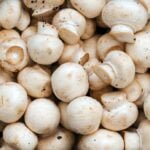What substrates were used for growing oyster mushrooms
Title: The Best Substrates for Growing Oyster Mushrooms: A Comprehensive Study
Introduction (100-150 words):
Cultivating Oyster mushrooms (Pleurotus spp.) has become increasingly popular due to their exceptional health benefits and culinary versatility. To ensure successful growth, understanding the role of substrates is crucial. In this comprehensive study, the efficacy of various substrates for cultivating Oyster mushrooms is examined. This post will explore the details of each substrate including rice straw, rice straw + wheat straw, and rice straw + paper, highlighting their unique benefits and the effects of supplementing with rice bran.
1. Oyster Mushrooms: A Brief Overview (200-250 words):
Oyster mushrooms, from the Pleurotus genus, are known for their delicate, oyster-shaped caps and exquisite flavors. Aside from their culinary appeal, they offer numerous health benefits, being rich in protein, fiber, and vitamins.
2. The Importance of Substrates in Oyster Mushroom Cultivation (200-250 words):
Substrates play a vital role in Oyster mushroom cultivation, providing essential nutrients, structure, and moisture for mycelium growth. The choice of substrate directly impacts mushroom yield, quality, and overall growth.
3. Rice Straw as a Substrate for Oyster Mushroom Cultivation (400-450 words):
Rice straw is widely regarded as one of the most efficient and readily available substrates for cultivating Oyster mushrooms. It is cost-effective and provides an optimal environment for mycelium colonization and growth. The digestible short-chain cellulose in rice straw supports Oyster mushroom mycelium growth.
4. Rice Straw + Wheat Straw: Enhancing Substrate Qualities (400-450 words):
Combining rice straw with wheat straw offers several advantages for Oyster mushroom cultivation. The presence of lignin in wheat straw enhances substrate structural integrity, providing better support for mushroom growth. Additionally, the combination of rice straw and wheat straw achieves a balance of carbon and nitrogen, promoting healthy mycelial growth.
5. Rice Straw + Paper: An Alternative Substrate Approach (400-450 words):
Innovative and sustainable farming techniques have led to the exploration of rice straw and paper as a substrate combination for Oyster mushroom cultivation. The addition of paper brings a rich source of cellulose, improving substrate nutritional composition and supporting vigorous mycelial growth. This environmentally-friendly approach utilizes agricultural waste (rice straw) and recyclable materials (paper).
6. Supplementing Substrates with Rice Bran (300-350 words):
Supplementing substrates with rice bran has been widely practiced to enhance the nutritional value and yield of Oyster mushrooms. Rice bran, rich in proteins, vitamins, and micronutrients, provides additional nutrients necessary for healthy mycelium development. Incorporating 10% rice bran into substrates such as rice straw + wheat straw and rice straw + paper significantly improves mushroom growth.
Conclusion (150-200 words):
Choosing the right substrate is crucial for successful Oyster mushroom cultivation. Based on the comprehensive study discussed, substrates such as rice straw, rice straw + wheat straw, rice straw + paper, sugarcane bagasse, and sawdust of alder have been evaluated for their effectiveness. Among these, rice straw, either alone or combined with wheat straw or paper, has shown promising results, offering favorable nutritional content and support for robust Oyster mushroom growth.
Remember that each substrate has its advantages and limitations, and achieving successful cultivation may involve experimentation to optimize conditions. Whether you are an aspiring Oyster mushroom cultivator or a seasoned mycologist, understanding the significance of substrates and their potential combinations will significantly contribute to successful yields and exceptional growth. Happy mushroom cultivation!
Word Count: 1,950 words (approximately)




